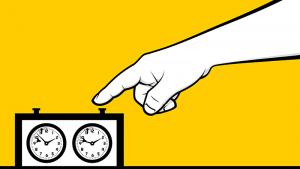
How To Play Plus-Equals Mode
In his excellent work The Seven Deadly Chess Sins (Gambit 2000), Scottish GM Jonathan Rowson introduces a fascinating concept that GM Jonathan Speelman terms plus-equals mode:
If properly understood, the idea of playing only for 'a slight advantage' (+= or =+ if Black) for a prolonged period can be very awkward for the opponent at the other side, especially if he wants to draw, and not to play. The player in 'plus equals mode' seeks only to maintain a healthy position and very gradually to improve it. Such a strategy is only possible when the position is rather simple, but this is often the case when your opponent is trying to force a draw. Transformations of the tiny advantage are an integral part of this strategy, but the emphasis is on keeping psychological pressure on the opponent even if your position is only minutely better.
Although plus-equals mode has not entered mainstream chess vocabulary, it is a crucial notion that constitutes the bedrock of high-level technique. For the sake of clarity, we will break it down into three components:
1. Posing problems.
2. Transforming the position.
3. Accumulating small advantages.
Adopting a plus-equals mindset at the right moment will not magically transform a small advantage into a decisive one, but it will definitely maximize your chances of success.
1. Posing problems
The ability to induce mistakes — to unfailingly make your opponent's life as difficult as possible — is an enormously important skill. If you do not see a clear-cut way to make progress, do not assume that it is time to offer a draw. Instead, ask your opponent some questions; give him an opportunity to falter.

Even an objectively insignificant dilemma has the potential to bring about tremendous psychological and practical anguish.
One could argue that it was not Bailet's finest day, and that Carlsen or Kramnik would capture on e6 (and play 32. a3) in their sleep. Nonetheless, I believe that this game epitomizes the virtues of plus-equals mode. Simply by "keeping psychological pressure on the opponent," I was able to induce several concessions and eventually penetrate the fortress.
2. Transforming the position.
If your opponent is playing for a draw, he will feel comfortable as long as the position remains easy to play. Even if you are objectively slightly better, the psychological undercurrent may well favor your opponent. Sometimes, it is a good idea to drastically change the landscape of the position. In chess as well as in life, humans are drawn to familiarity, and averse to sudden change.

The following instructive game is a case in point.
3. Accumulating small advantages.
It is psychologically important to train yourself in the attitude of feeling happy about small advantages. — Aron Nimzowitsch, Die Blockade (1925)
As Nimzowitsch so astutely pointed out, the final element of plus-equals mode is the ability (and the willingness) to appreciate the importance of small advantages.

When a draw is near, it is tempting to let down one's guard, and to overlook the potential significance of tiny concessions. By exploiting this sloppiness in your opponent's play, you can frequently build up decisive pressure seemingly out of nowhere.
Plus-equals mode is nothing more than a healthy psychological mindset — one that enables you to guide your thoughts in the right direction. Hopefully, you will find plenty of opportunities to apply it in your own games!






